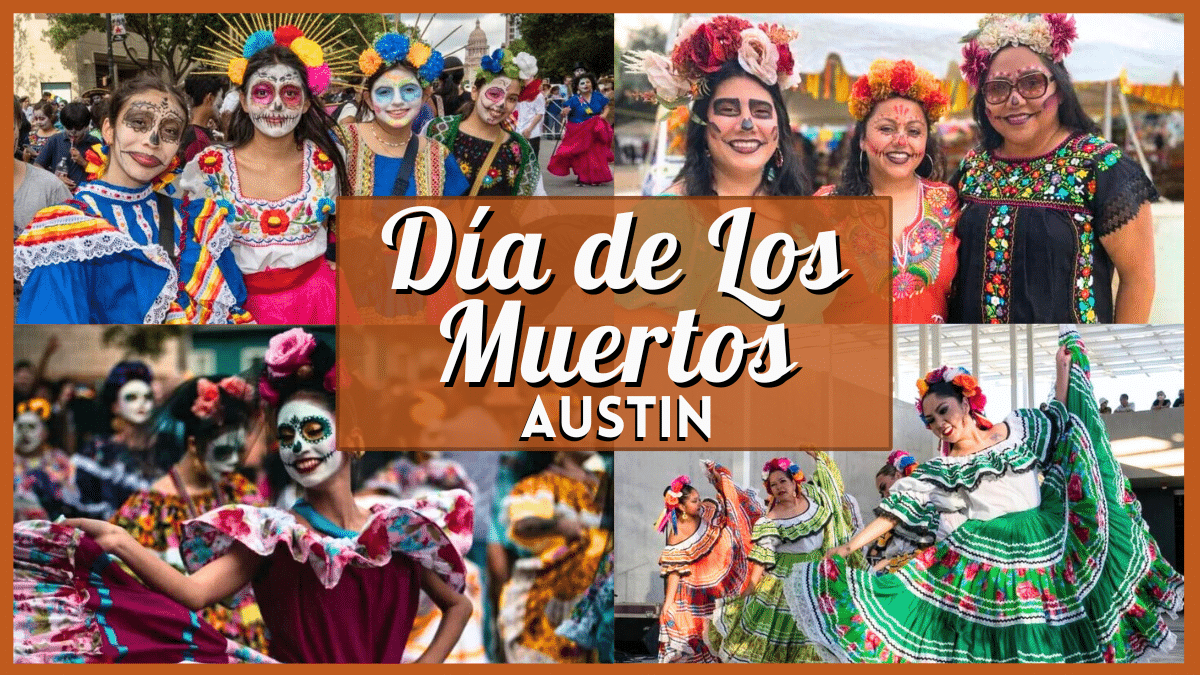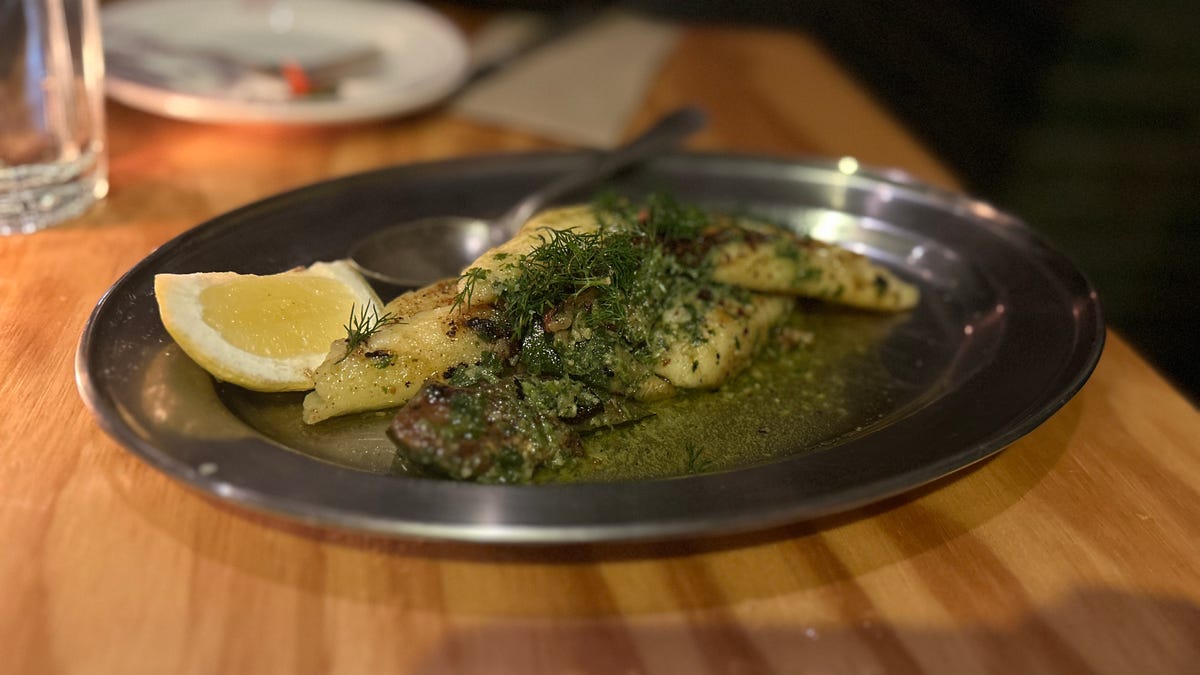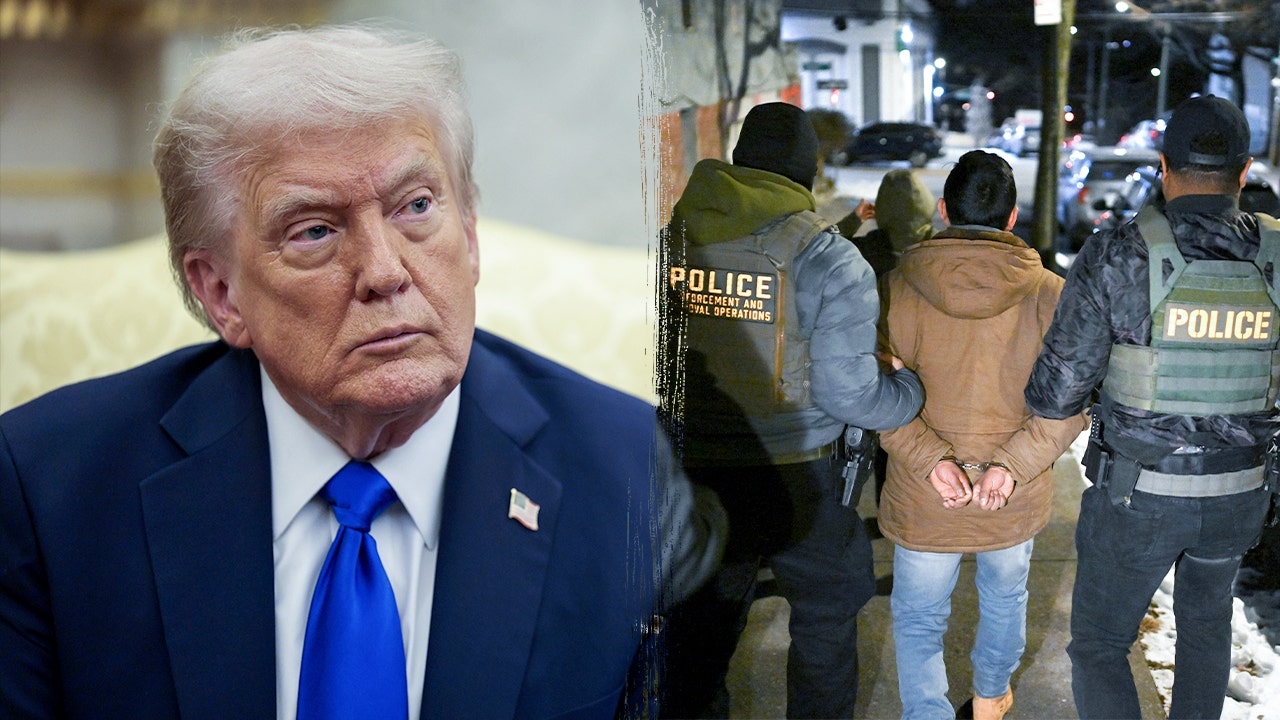California
The surprising force stalling climate progress: California restaurants

By Ben Elgin | Bloomberg
In the fight to ratchet down climate emissions and soothe the most dangerous effects of an overheating planet, one of the most withering setbacks in recent memory wasn’t delivered by the oil industry or coal excavators, but, rather, a group of restaurants in California.
When Berkeley became the first city in the country to ban the extension of gas pipes into new buildings, it targeted a contentious source of climate pollution. The combustion of gas inside of homes and businesses to power things like furnaces, water heaters and stoves accounts for 9% of California’s emissions, or 33 million metric tons of heat-trapping gases per year, equivalent to the entire climate footprint of Hong Kong.
With the US gas system continuing to expand – the industry connects one new customer to the gas grid each minute – Berkeley was the first to try to stop this climate problem from becoming bigger. Since it enacted its ordinance in 2019, more than 100 cities, counties and states across the country have followed.
Today, these efforts are reeling. The California Restaurant Association took the city to court in November 2019, arguing that its 20,000-plus members preferred cooking with a gas flame and that, even though the rule wouldn’t require changes to existing buildings, such an ordinance would limit their options when opening new locations. Moreover, they argued, federal energy laws preempt these aggressive local ordinances.
After a see-sawing legal battle, the restaurants prevailed. When Berkeley’s last-ditch request for a rehearing was rejected earlier this year, the city in March canceled its ordinance, prompting a jubilant CRA to declare it a “significant triumph for chefs and restaurateurs.”
Now, Bloomberg Green has learned, a coalition of gas companies and their supporters are planning to wield the restaurants’ legal victory to beat back similar rules across the western US. This puts restaurants directly at odds with a hospitable planet, as there’s no feasible pathway to avert catastrophic warming if places like California don’t sharply reduce gas combustion in buildings, according to climate experts.
“It’s rather irritating to have restaurant owners put their heads in the sand,” says Robert Howarth, a professor of ecology and environmental biology at Cornell University. “We have to move away from natural gas. The planet demands it.”
This is not the first time restaurants in California have sided with industry giants in an epic battle over public health. In 1987, a year after US Surgeon General C. Everett Koop warned second-hand smoke was causing lung cancer in healthy nonsmokers, Beverly Hills became the first city in the state to ban smoking inside restaurants. Several nearby towns followed with similar proposals.
Restaurants howled in protest. Some eateries in Beverly Hills complained their sales plummeted overnight by nearly a third, though tax records later showed no such drop had occurred. Within months, the Beverly Hills city council walked back its rule.
These public health battles, nearly four decades apart, share another striking resemblance: Restaurant groups served as the public face for both efforts, while they worked alongside hidden powerful interests.
In the smoking fracas, millions of cigarette-company documents later unearthed during litigation revealed the tobacco industry recruited and worked closely with restaurant groups around the country, including CRA, to fight smoking restrictions. The industry even surreptitiously funded and created the Beverly Hills Restaurant Association, which led the successful pushback against the state’s first ban.
“Public health advocates need to understand that, with rare exceptions, when they talk to organized restaurant associations, they are effectively talking to the tobacco industry,” warned researchers at the University of California San Francisco in a 2002 paper.
In today’s fight over gas, CRA also hasn’t acted on its own. It refuses to say who paid the legal bills for its Berkeley suit. As a nonprofit, it must make its tax filings public. In these forms, nonprofits are supposed to disclose contractors to whom they paid at least $100,000 in the previous year. CRA regularly lists law firms working on its behalf, such as those litigating Covid-related restrictions. But the restaurant group has never disclosed a payment to Reichman Jorgensen Lehman & Feldberg LLP, the law firm that spearheaded the Berkeley case.
The Berkeley lawsuit topped the $100,000 threshold. When Sarah Jorgensen, the law firm’s founding partner, spoke at a National Propane Gas Association board meeting in February, she was asked what a legal challenge of this sort would cost, according to a recording of the discussion heard by Bloomberg Green. After an NPGA executive estimated it would require $300,000 to $400,000 to take a case to court and “another couple of hundred thousand” for appeals, Jorgensen said “we definitely spent more than that on Berkeley.” In a written response to questions, Jorgensen declined to say who paid their legal bills.
So who picked up the tab? SoCalGas, the nation’s largest gas utility whose territory covers 24,000 square miles from the Mexican border to central California, paid Reichman Jorgensen more than $4 million between 2020 and 2022, according to its regulatory filings and as reported last year by the Sacramento Bee. When compelled by state regulators to explain some of these payments, SoCalGas denied it was for the Berkeley case, but rather to examine legal issues such as “government actions potentially affecting natural gas service” and “whether they might be preempted by federal law” (which was the core issue in the Berkeley case).
Meanwhile, SoCalGas and San Diego Gas & Electric, both subsidiaries of energy giant Sempra, combined to contribute over $1.3 million to CRA and its charitable arm since 2019, a sharp uptick from previous years. In a statement, SoCalGas said that it didn’t fund the Berkeley suit and its contributions went to the restaurant association’s charitable arm, which supported eating establishments that struggled during the pandemic.
Some close watchers of the utility, though, don’t buy it. Given the payments funded an examination of “the very same legal issues raised in that litigation,” declared the Public Advocates Office, an independent watchdog for the state’s utility regulator in a filing last year, “it strains credibility to suggest that the utility did not fund research that supported the California Restaurant Association’s litigation.”
Matt Vespa, a senior attorney at Earthjustice and lecturer at the University of California Berkeley School of Law, who dug through a thicket of utility filings to unearth many of the gas industry payments, agrees. “It’s clear to us that SoCalGas underwrote the lawsuit,” he says. (SoCalGas called such claims “irresponsible.”)
Jot Condie, chief executive officer of CRA, has dismissed such questions, telling one news outlet back in 2019 that it amounted to “looking for monsters under the bed.” He declined to be interviewed by Bloomberg Green and would not say who funded the suit, but in written responses to questions, Condie rejected parallels to the indoor-smoking fight. “If comparing these two dissimilar issues decades apart is intended to portray the association as doing the bidding for other interests, it’s an inaccurate and misleading portrayal of this association’s 118-year history,” he said.

He added that “the decision to fight the illegal city ordinances was CRA’s alone,” and that it supports California’s climate goals. “There is a way to transition to a greener economy without violating federal energy law and harming the restaurant community,” he said. When asked for details on what such a low-carbon pathway would look like, he declined to provide specifics. “The emphasis must be on a transition,” he said. “No economy, industry, or business can be expected to flip a switch overnight.” (Berkeley’s rule wouldn’t have required any changes to existing restaurants.)
For longtime tobacco watchdogs, like Joelle Lester, executive director of the Public Health Law Center at the Mitchell Hamline School of Law, it amounts to more than a striking case of déjà vu. They’re concerned the tactics that once slowed indoor-smoking bans will also stymie efforts to solve climate change.
“We started realizing how closely the gas companies’ tactics mirror Big Tobacco, almost like they’re following a script,” says Lester, whose group recently published a report examining the similarities. “We thought it was important to sound the alarm that there’s this other industry doing really the same thing.”
Gas wasn’t always a widely viewed climate villain, with the Center for American Progress, a left-leaning think tank, even heralding it 15 years ago as a “bridge fuel” to a cleaner future. When burned, it produces about half the heat-trapping emissions of coal. In the mid 2000s, new drilling techniques like fracking unlocked huge quantities of cheap gas. Coal plants couldn’t compete on price and began shutting down.
But as many studies have shown, the climate harms from gas are extensive. When methane is unearthed and delivered to homes and businesses through thousands of miles of pipelines, some of the gas escapes. Because unburned methane causes more than 80 times the warming as an equivalent amount of CO2 over two decades, these leaks nullify much of the fuel’s improvement over coal.
Governments today are pushing for dramatic shifts away from gas. Lawmakers in the European Union agreed in April to abolish fossil fuels in new construction by 2030, while requiring retrofits for the least-efficient buildings. New York State, meanwhile, enacted a rule last year to ban gas in most new construction. Reichman Jorgensen filed a suit in October to block it on behalf of a slew of plaintiffs including homebuilders and gas companies. (The New York State Restaurant Association says it’s concerned about the rule but didn’t join the suit because restaurants are exempt from the ban.)
The grim outlook for gas has sparked energetic pushback by restaurant groups around the country. In the District of Columbia, where the combustion of gas in buildings contributes 22% of its climate footprint, the Restaurant Association of Metropolitan Washington emailed members in February warning them of “misguided energy policies” that would limit their access to gas. It urged them to become advocates for their local utility, Washington Gas, describing it as a “trusted partner to the business community for over 175 years.” The utility recently fought a rule that would fund retrofits and electrification of homes for 30,000 lower-income residents. (RAMW chief executive Shawn Townsend declined to comment.)
This issue is supercharged in California, where homes and businesses are more reliant on gas than in any other state. That’s why state regulators, when crafting a blueprint to reach California’s goal of a 40% cut in emissions by 2030, stressed the need to shrink the state’s gas system and halt expansion of gas pipes into new buildings.
“If we’re going to have a chance of slowing global warming, we have to deal with the buildings problem,” says Rafael Mandelman, a San Francisco supervisor who authored a rule requiring new buildings in the city to be all-electric beginning in 2021. “It’s an imperative if human beings are going to live comfortably on this planet.”
The gas industry warns these policies will hike customer bills and increase the possibility of electric blackouts. “The choice available to us isn’t how to convert our nation’s energy system away from natural gas but how the customers can continue to benefit from the country’s abundance of affordable natural gas and ensure reliability and resiliency,” said American Gas Association chief executive officer Karen Harbert in a written statement.
Many gas companies also contend the harmful impacts of their fuel can be alleviated by mixing in vast quantities of methane captured from dairy farms and landfills. This so-called “renewable natural gas” counts less towards climate change than fossil gas, because it comes from sources that likely would have vented the methane into the atmosphere.
But state officials aren’t nearly as optimistic. Utility regulators in Massachusetts, for instance, who are examining the future of their gas system as the state tries to slash emissions by 90%, recently rejected proposals by gas companies to bank heavily on RNG, highlighting concerns about its cost and availability. The California Energy Commission came to a similar conclusion in a 2021 report, finding there wasn’t nearly enough RNG to decarbonize buildings and that maximizing its limited supply would cost more than seven times as much as electrification.
But a sharp turn away from gas requires a level of government intervention that the California Restaurant Association has long shunned. The group traces its beginnings to 1906, when a café owner in Los Angeles “got sick and tired of being told how to run his business by City Hall,” Condie recounted during a luncheon speech several years ago. That café operator, he said, “gathered a bunch of restaurateurs and said, ‘We ought to form an organization and fight back against some of these regulations.’” Ever since, Condie added, CRA’s “mission hasn’t changed. That’s what we do.”
Condie has spent much of his career fighting government edicts. During the 1990s, after a stint as a campaign manager and legislative aide to Republican lawmakers in the California state assembly, he worked for the California Manufacturers Association. There, he worked with the “Thursday Group,” a powerful coalition of industry groups that challenged environmental rules they deemed harmful to the state’s business interests, such as early efforts to regulate CO2.
Since Condie took the reins at the restaurant association in 2004, the group has spent time fighting a wide array of measures, like minimum-wage hikes and bans on polystyrene takeout containers, arguing they would erode restaurants’ profits. When a proposal emerged in 2018 for California to study ways to reduce emissions in buildings, CRA officials called it an attack on their preferred fuel. “We’re still not sure how a restaurant is going to tell a chef to not use natural gas,” a CRA spokeswoman retorted in a video briefing. “May as well tell them: ‘Put your knives down and forget the pots and pans, too!’”
On a stormy morning this February, Sarah Jorgensen was warmly introduced to the board of the National Propane Gas Association, which had gathered in a wood-paneled conference room at a hotel perched over Monterey Bay along California’s central coast. There, the Harvard-educated lawyer was feted for her crucial role in beating back gas restrictions around the country. “Sarah has been an absolute asset for the propane and natural gas industry over the past several years,” NPGA’s chief executive Stephen Kaminski told the audience, according to a recording of the event.
Just weeks earlier, Jorgensen scored a big victory on the restaurants’ behalf when a federal appeals court in the Ninth Circuit shot down Berkeley’s request for a rehearing, all but ending the four-year legal battle. This now meant that scores of cities and counties that followed Berkeley to restrict gas in new buildings might be in violation of the court’s ruling, whose jurisdiction covers nine states in the western US.
The plan now, Kaminski explained to the audience, is to reach out to these local governments “and, for lack of a better word, strong-arming those municipalities into following the law.” Jorgensen then said this might begin with an initial “letter-writing campaign” to these cities to see if they’re going to withdraw their rules.
“The decision doesn’t do too much good if people just don’t follow it,” she told the audience. “If cities still don’t comply, I think there will have to be a couple of lawsuits.”

When asked about the remarks, Jorgensen replied in writing that any efforts to enforce the court’s decision are “confidential client matters.” Kaminski said in a statement that “NPGA does not strong-arm,” but, rather, is “exploring” whether local governments are continuing to enforce gas bans “despite binding jurisprudence” from the Berkeley suit.
While many cities, including San Francisco and Los Angeles, are sticking with their gas bans, at least 10 others, including Sacramento and Menlo Park, have already halted their rules after the Berkeley decision.
There are other endeavors that could slow the expansion of gas in California. The state’s utilities have long used ratepayer money to help fund the extension of gas and electric service to new homes and buildings. The California Public Utilities Commission recently abolished this practice for any new buildings using gas. This will add $28,000 to the average home that wants to use gas, and over $95,000 for new commercial buildings.
Meanwhile, the Bay Area Air Quality Management District, which regulates air pollution for over 7 million people in and around San Francisco, has implemented rules that will effectively ban the sale of new gas-powered water heaters and furnaces. These regulations will be phased in starting in 2027.
Gas companies “are not going to win this thing,” says Charlie Spatz, research manager at the Energy and Policy Institute, a utility watchdog. “The whole point of the lawsuits is to intimidate the cities and wear them down.”
Ironically, the first major blow to the tobacco industry’s vice-like grip over restaurant groups was delivered by the California Restaurant Association. After adopting a resolution opposing smoking bans in 1983 and working alongside cigarette companies for years, CRA knew they were losing and began to tire of the struggle, according to Paul McIntyre, who helped run government and public affairs for the group in the 1980s and 1990s.
“It was like the restaurant association had become a smoking association,” says McIntyre. In 1990, after months of tortured deliberations and a contentious board meeting, CRA held a press conference to announce a monumental shift: It would now call for a statewide smoking ban in all public places.

It’s unclear if any similar turnabout is in the cards for California restaurants today. But loyalty to gas may not be ironclad.
Chipotle Mexican Grill, for instance, has vowed to halve climate-warming emissions from its 3,500 restaurants by 2030. It recently announced a new all-electric kitchen design that it plans to implement at over 100 locations this year.
Meanwhile, induction cooktops, which use electricity to send pulses of electromagnetic energy to heat up cookware, have made significant improvements and “generally outperform” all other options, including gas, according to Consumer Reports. “No other technology we’ve tested is speedier.”
But induction ranges cost two to three times more than a comparable gas stove. And some restaurants will need to upgrade the electric connection into their building to handle the increased power demands.

“The technology exists, it is state of the art and it is expensive,” says Sammy Monsour, a chef who co-owns and operates Joyce, a restaurant in downtown Los Angeles, which uses gas.
That can be too tall an order for restaurants already facing huge hurdles, he says. So, if governments want to phase out gas, he says, there needs to be plenty of financial support to help restaurants make that jump.
But restaurants need to get on the right side of the climate issue, Monsour adds, and stop fighting gas bans that have no impact on existing buildings. “That’s a little ridiculous to hold back progress for an if-what-maybe situation,” he says. “We do need to be greener. We do need to get away from natural gas.”
More stories like this are available on bloomberg.com
©2024 Bloomberg L.P.

California
Nature tour highlights historic importance of California oak trees during the fall

The Shumway Oak Grove Regional Park in Stockton launched an autumn nature walk for the community to get an inside look at how important California’s historic oak trees are, especially during the fall.
Carolyn Dougherty is a volunteer naturalist at Oak Grove Nature Center and led a group of people on Sunday morning for a new nature walk, which kicked off this fall: “Autumn Among the Oaks”.
“During the autumn, we talk about what’s happening here in the autumn, like our oak galls and our acorns,” Dougherty said. “And what animals are doing and what our Yokuts tribes were doing at this time of year, which was gathering acorns to store for the winter.”
Dougherty is a retired educator and a big advocate for lifelong learning, not just for herself but to share knowledge with others — especially at this Oak Grove preserve.
“We are a preserve,” Dougherty said. “And I’d like people to understand why the importance of preserving the oak groves isn’t just because of the trees but all of the species that each tree supports.”
Dougherty said these oaks are keystone species, supporting up to 4,000 different species like California scrub-jays, acorn woodpeckers, California ground squirrels, and Western lizards.
“This is my second time taking this tour because I find it fascinating,” Dr. Julie Bates-Livesay, a Stockton resident, said. “And so I got to learn more about galls that grow on oak trees that we make ink out of them, that historic documents were written in the ink produced by them.”
Dougherty said the Yokuts Trail and Miwok Trail were named to pay homage to the ancestors of the area. And as these leaves fall this season, one of the goals of the tour is to have an appreciation for California’s rich history.
“To know where we came from and just to have a deeper appreciation of native California history…the importance of our landscape and what our native landscape contributed to our indigenous people, and how it transformed with our agriculture and industry,” Dougherty said.
Dougherty says 80% of these groves in California are unprotected and can be affected by development and agriculture.
“So, each time that we can protect a little pocket of it is important to us,” Dougherty said.
“Come out and be in nature,” Dr. Bates-Livesay said. “We’re very fortunate to live where we live, to have access to this kind of a nature environment. Whether it be here, at Oak Park, or in Lodi, at Lodi Lake, or a little further up the hill at one of our California or National Parks. We’re blessed here in California to have that kind of access.”
With each step the local community members took with the tour, they learned to appreciate the oaks, their history, and the steps it takes to preserve the land amidst this season.
“To see the park being utilized, from everything from frisbee golf to these kinds of educational tours is a big thing,” Dr. Bates-Livesay said.
“I think it’s really important to understand where we came from, and that our part in this life is to be a good steward,” Dr. Bates-Livesay said. “And the only way you can be a good steward is if you even know that nature exists and that you’re a part of that.”
There will also be a Sandhill Crane Festival in Lodi next week. Dougherty told us these habitats were once threatened, but with the help of conservationists and local farmers working together, she says the cranes are coming back.
There are tours for different seasons with different topics related to the season, along with a nature center with different programs. Some of those include walks, school tours, an “Astronomy in the Park” monthly event to see stars, and hands-on learning for people of all ages.
For Dr. Bates-Livesay and her friends, they capped off the tour with a picnic among the oaks.
California
It rained a lot in October. Is fire season over now?

This autumn brought something that isn’t always common for much of California — a decent amount of rain in October. Rather than heat waves, there have been umbrellas.
After years in which some of the worst wildfires in state history happened in the fall, a lot of people are wondering: Is fire season over?
It depends on where you live, fire experts say. And simply put, there’s more risk in Southern California right now than Northern California.
“We have not yet seen enough rain in Southern California to end fire season,” said Daniel Swain, a climate scientist with the University of California division of Agriculture and Natural Resources. “But we probably have in Northern California.”
January saw historic, devastating fires in Los Angeles. Since then, it has been a relatively mild fire year statewide in California.
Through Monday Oct. 27, a total of 522,372 acres have burned statewide in areas overseen by the California Department of Forestry and Fire Protection and the U.S. Forest Service. That’s a drop of 40% from the previous 5-year average of 1.3 million acres over the same time. A big part of the reason is the early onset of rain.
Through Thursday, San Jose had received 2 inches of rain, more than four times its historical average for the month of October. Oakland had 1.64 inches — double its historical average of 0.84. Sacramento’s total also was double the historical average, and Santa Rosa and San Francisco were at 125% and 113% of normal for the month.
Farther south, Fresno was at 223% of normal, with 1.18 inches, and Los Angeles had received 252% of normal with 1.41 inches. But a few areas, including San Diego and Palm Springs, remain below normal. And nearly all of Southern California’s rain came in one storm on Oct. 15. After that, temperatures have soared back up, hitting 97 in Los Angeles this week.
On Wednesday the National Weather Service issued a red flag warning for parts of Ventura and Los Angeles counties. With forecasts for strong winds that day, Gov. Gavin Newsom announced that 129 firefighters, 10 engines and three helicopters would be pre-positioned in case fires started in those areas.
But in Northern California, the trend has been just the opposite.
Cal Fire cancelled a controlled burn planned for Wednesday at the Soquel Demonstration Forest in Santa Cruz County aimed at reducing overgrown brush. The reason: brush and trees were too damp.
The day before, Cal Fire officials had planned to burn 52 acres in San Mateo County in a controlled fire east of Interstate 280 near Belmont and Crystal Springs Reservoir. They gave up after 6 acres because only grass and not heavier vegetation like coyote brush would burn, said Sarah Collamer, a Cal Fire forester who was overseeing the operations.
“We’re still in fire season,” she said. “We are getting small starts. They are going until we put them out. But the fire danger is greatly reduced.”

Illustrating her point, last Thursday, a fire broke out east of downtown San Jose at Alum Rock Park. Cal Fire sent a plane to drop retardant on it. But it was put out at 10 acres and caused no damage. A grass fire that began near Altamont Pass in Alameda County last Sunday burned 20 acres and was easily contained by fire crews.
Moisture levels are key. As most campers know, wet wood doesn’t burn. When California is in droughts and heat waves, moisture levels in plants plummet. After rains and cooler temperatures, along with higher humidity levels, moisture levels go up. Then, fires may start in grass, but they don’t spread easily to damp brush and trees, particularly if there aren’t strong winds.
“Right now you could get a grass fire going,” said Craig Clements, director of the Fire Weather Research Laboratory at San Jose State University. “But whether or not it will end up being a big fire is unlikely. We are seeing the hills green up already from the early rain. It looks like January right now in the East Bay Hills.”
Overall, national experts say California is in good shape. The 7-day forecast from the National Interagency Fire Center in Boise, Idaho has “little or no fire risk” for all of California except part of southern California from Santa Barbara to the Mexican border where it is listed as “low risk.” And more rain is forecast in Northern California on Wednesday.
Fire experts disagree on whether there is an exact amount of rain each fall that signals the end of fire season. Often, supervisors of controlled burns wait until at least 1 inch has fallen, Clements said.
Dan Cayan, a research meteorologist with the Scripps Institution of Oceanography in San Diego, published a study in 2022 showing that since World War II, 90% of the acres burned in Southern California have burned before 0.35 of an inch of rain has fallen in autumn. After that, fires can still start during winter dry spells and high Santa Ana winds, he said. But they are much less likely.
“Northern California is doing pretty well,” he said. The dividing line this fall between wetter-than-normal and drier-than-normal runs through L.A. County. We’ve had some slight rain in San Diego, but it has been nearly three weeks with nothing. We’re still in a vulnerable situation down here.”
Many of California’s worst wildfires have occurred in the fall, including the Oakland Hills Fire in October 1991; the Camp Fire in Paradise, in November 2018; and the Tubbs Fire in October 2017, which killed 22 people and burned 5,600 structures in Napa and Sonoma counties.
After those fires, Cal Fire officials and many political leaders began saying that fire season is all year long in California due to warmer conditions from climate change.
To some extent that is true. The devastating wildfires in Pacific Palisades and Altadena this year occurred in January, amid a long, hot, dry spell and winds that reached 100 mph.
But in general, risk goes down when rains start, temperatures cool, and days shorten, experts say. Because of the damp weather this fall, Cal Fire officials have begun to relax back-yard burning rules. Starting Oct. 17, they have allowed it in nearly every Bay Area County and all counties north to the Oregon border, under permits, when it was altogether illegal during the hot summer months.
In winter, Cal Fire stations also reduce staffing from peak levels, although that has not started yet.
“We could still have 80-degree days with winds,” said Capt. Robert Foxworthy, a Cal Fire statewide spokesman. “There’s still a chance of wildfire. We’re not expecting large damaging, destructive fires burning timber and brush because of how much moisture we’ve received. But in some places there is a threat still there.”
California
Exclusive: FBI searched California real estate firm linked to bad bank loans

Item 1 of 2 The podium for the director of the Federal Bureau of Investigation is seen at FBI headquarters in Washington, U.S. June 14, 2018. REUTERS/Yuri Gripas/File Photo
Sign up here.
On September 11, FBI agents searched Continuum’s Newport Beach, California, offices, law firm Paul Hastings wrote in a September 12 letter seen by Reuters.
Representatives for Continuum did not respond to emails and calls seeking comment. The FBI is an enforcement arm of the Justice Department. Spokespeople for the agencies did not respond to requests for comment. An attorney for Cantor Group said the firm upheld the terms of the Zions and Western Alliance loans and did not provide comment on the government scrutiny.
Allen Matkins, a law firm that represents other entities linked to Continuum, wrote in an October 2 letter that it learned on September 11 that certain of its clients were the subject of search warrants “in connection with a pending criminal investigation,” and that a grand jury had been convened in the case.
Prosecutors typically convene a grand jury when they intend to gather more evidence. The letters did not say which specific criminal authority was leading the case or what potential misconduct or individuals it was focused on.
Criminal investigations do not necessarily mean any wrongdoing has occurred and many do not result in charges.
Reuters is reporting the FBI search and probe for the first time. The government scrutiny could have ripple effects for what legal filings and public records show is a complex web of investors and lenders tied to Continuum’s real estate dealings, some of which are entangled in civil litigation.
Paul Hastings and Allen Matkins are representing parties embroiled in a complex real estate dispute. The letters relate to those proceedings. The Allen Matkins letter was disclosed in a California court.
When asked about the letter by Reuters, a lawyer for Paul Hastings said the firm was “working to unravel multiple levels of alleged fraud,” but did not provide more details.
Allen Matkins did not respond to calls and emails seeking comment.
PASSIVE INVESTORS
Zions on October 15 sued Cantor Group fund guarantors Andrew Stupin and Gerald Marcil, among others, to recover more than $60 million in soured commercial and industrial loans. The next day, Western Alliance flagged that it had sued the pair and a different Cantor fund in August to recover nearly $100 million.
Both suits allege key information was misrepresented or not disclosed, breaching the loan terms. Western Alliance also alleges fraud on the part of the Cantor fund.
Continuum acquires and manages distressed real estate assets for groups of investors, and its largest investors include Stupin and Marcil, according to a February arbitration ruling related to the real estate dispute. That ruling found Cantor “consists solely” of Continuum’s legal owner, Deba Shyam, and shares the Continuum offices. Shyam did not respond to calls and emails seeking comment.
Cantor upheld its contractual obligations and was transparent with its lenders, while the loans were audited and independently reviewed multiple times over the years, said the Cantor attorney Brandon Tran, who also represents Stupin and Marcil.
The pair are passive investors in Cantor and held no operational roles, he added. Cantor in legal filings has disputed that the Western Alliance loan is in default.
In a statement, Marcil said he had invested in several of Continuum’s properties. He denied wrongdoing and said that he was a victim.
Spokespeople for Zions and Western Alliance did not respond to requests for comment.
Reporting by Douglas Gillison and Chris Prentice; Editing by Michelle Price
Our Standards: The Thomson Reuters Trust Principles.
-

 Milwaukee, WI6 days ago
Milwaukee, WI6 days agoLongtime anchor Shannon Sims is leaving Milwaukee’s WTMJ-TV (Channel 4)
-

 News6 days ago
News6 days agoWith food stamps set to dry up Nov. 1, SNAP recipients say they fear what’s next
-

 Alabama1 week ago
Alabama1 week agoHow did former Alabama basketball star Mark Sears do in NBA debut with Milwaukee Bucks?
-

 News1 week ago
News1 week ago1 dead, 6 injured in shooting at Lincoln University homecoming festivities
-

 Austin, TX1 week ago
Austin, TX1 week agoDia De Los Muertos Austin: Parades, Altars & Events
-

 Politics1 week ago
Politics1 week agoTrump to jet off to Asia as North Korea fires ballistic missiles and China trade questions loom
-

 Seattle, WA6 days ago
Seattle, WA6 days agoFOX 13’s Aaron Levine wins back-to-back Jeopardy! episodes
-

 Culture5 days ago
Culture5 days agoVideo: Dissecting Three Stephen King Adaptations




















